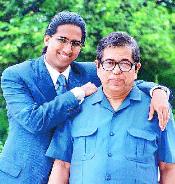Every business has to devote time to training its employees, whether you’re teaching them years’ worth of material or just giving them an initial overview of how your firm may do things differently from others in the industry.
In either case, employees who are well trained will be more attentive, more engaged, more confident in their jobs, and inevitably more productive. You’re also likely to suffer lower employee turnover and enjoy higher employee morale.
But do you know how to provide better training to your employees? Here’s how.
1. Set the Stage
 Before you begin the training, take the time to set the stage. Talk to your new hires and any employees who are shifting to new roles about what your expectations are, how they’re going to be trained, and what they’ll have to learn to be more effective workers.
Before you begin the training, take the time to set the stage. Talk to your new hires and any employees who are shifting to new roles about what your expectations are, how they’re going to be trained, and what they’ll have to learn to be more effective workers.
Once they’ve received a high-level overview, your people should have a much better understanding of what their priorities should be and their likely takeaways from the training.
2. Outline the Objectives
Similarly, you’ll want to outline the objectives for each segment of the training sessions. If you’re planning to introduce an employee to the use of your POS, for example, by the end of the session they should be able to complete a customer transaction. Write out at least a few goals for each section and make sure you’ve achieved them by the end of the session.
3. Provide Supplementary Material
 Most people aren’t going to be fully trained after a single lecture or an interactive experience. The typical staffer needs to follow up with further study and practice to master the task or function.
Most people aren’t going to be fully trained after a single lecture or an interactive experience. The typical staffer needs to follow up with further study and practice to master the task or function.
That’s why it’s worthwhile to provide your employees with supplementary material, such as aspiral-bound employee handbook that explains everything they need to know. Whatever form it takes, the supplementary material should:
- Set an agenda: Why does this content exist and how should it be used? What’s the best way for employees to use the handbook, and what are the training segments to come going to look like?
- Recap the information: The reading material should also recap whatever information you’re conveying as well as your training sessions. This way, if an employee has questions or just wants to refresh his or her memory on a topic, the person has a convenient resource to consult.
- Provide additional resources: It’s also a smart idea to provide your team with additional resources. The handbook can list titles for further reading and provide contact information for others within the department who can clarify additional questions as they arise.
4. Rely on Small, Frequent Sessions
Most people have limited patience and attention span. Most of us can absorb only so much information at a time. If you try to cram an entire course into a single, long session, your employees are apt to become frustrated and they won’t learn as much.
It’s much better to rely on frequent yet short sessions, with plenty of breaks between them.
5. Tailor Your Approach to the Individual
 Although it’s a good idea to have a general training program in place, you might also wish to tailor your approach to each individual you must train. Different people have different learning styles and capabilities in terms of study habits and practice.
Although it’s a good idea to have a general training program in place, you might also wish to tailor your approach to each individual you must train. Different people have different learning styles and capabilities in terms of study habits and practice.
Some workers learn better with a minimal approach that allows them to practice on their own, while others thrive in an environment that features more direct coaching and guidance. One of your best strategies here would be to pair new employees with the best possible teacher.
You should have several trainers to choose from, so everyone can find the perfect personality fit.
6. Make It Memorable
Reading an instruction manual out loud in a voice is not going to be memorable for most new staffers. If you want them to retain information and develop a better chance of succeeding in the workplace, you’ll have to go out of your way to make the training sessions memorable.
You can do this by injecting humor, telling interesting real-life stories, or making each training session a truly novel experience.
7. Provide Rewards
 Establish some rewards for employees who complete the training process or achieve certain milestones during the process. Even simple and inexpensive rewards, such as a pin for completing a particular training module, can encourage completion of the entire training program and improve employee morale as well.
Establish some rewards for employees who complete the training process or achieve certain milestones during the process. Even simple and inexpensive rewards, such as a pin for completing a particular training module, can encourage completion of the entire training program and improve employee morale as well.
8. Get Feedback and Improve
Finally, make it a point to obtain feedback in order to improve. After the end of each training session, ask your employees what they thought and whether they were confused about anything.
When employee training is complete, use a survey to collect further opinions and suggestions about your training sessions. If several employees complain about something or express a need that wasn’t met, those are strong clues to consider changing your training procedures for future employees.
Article Submitted By Community Writer




